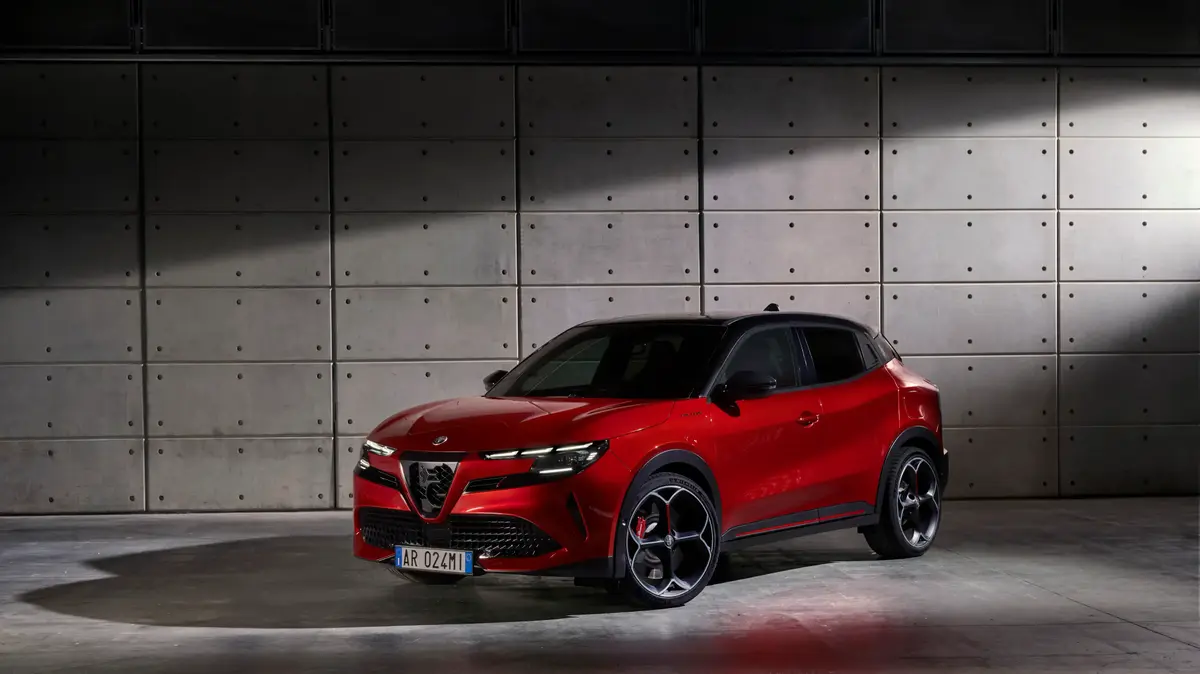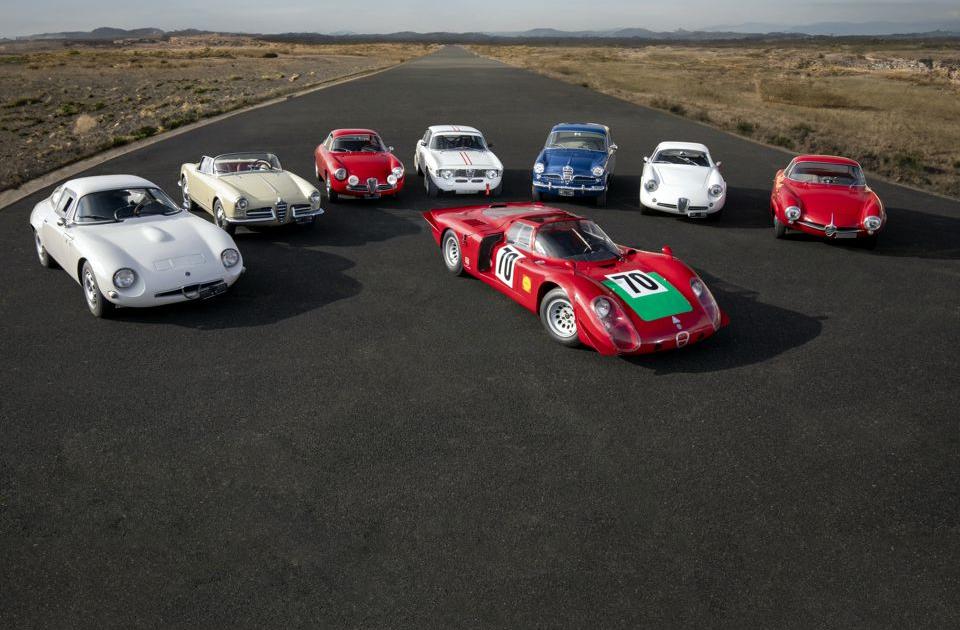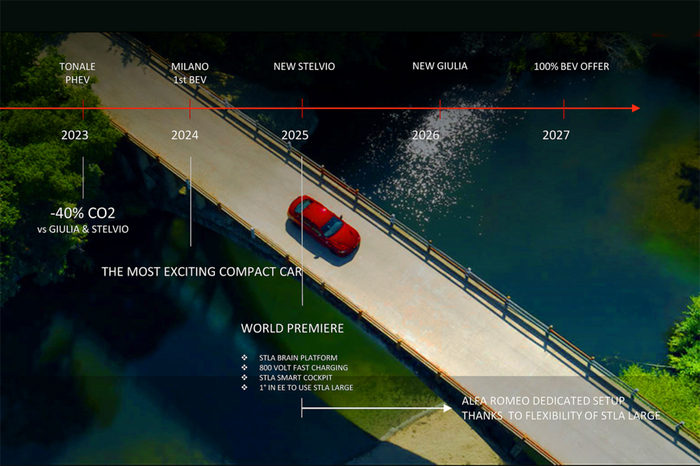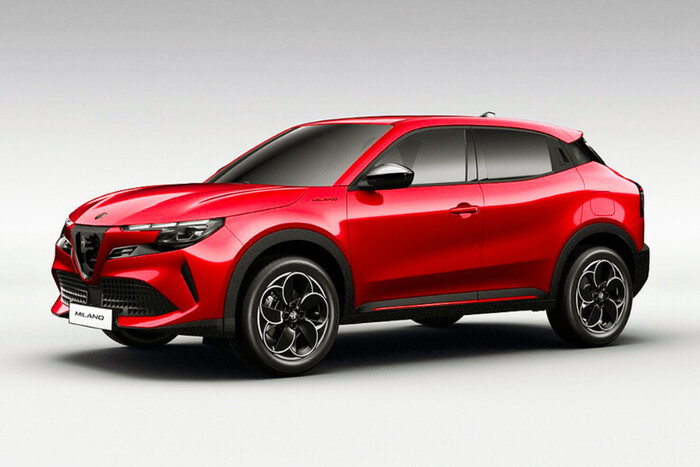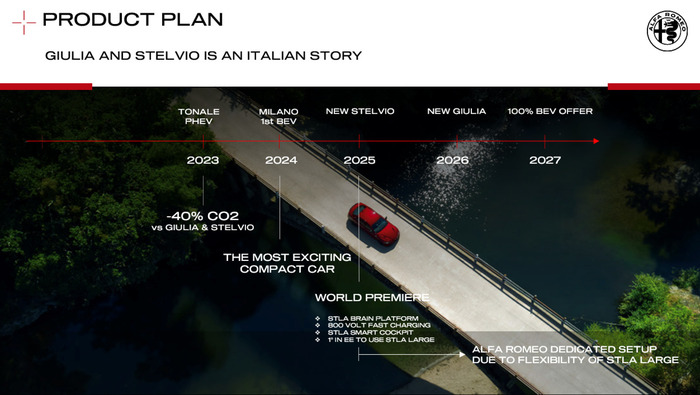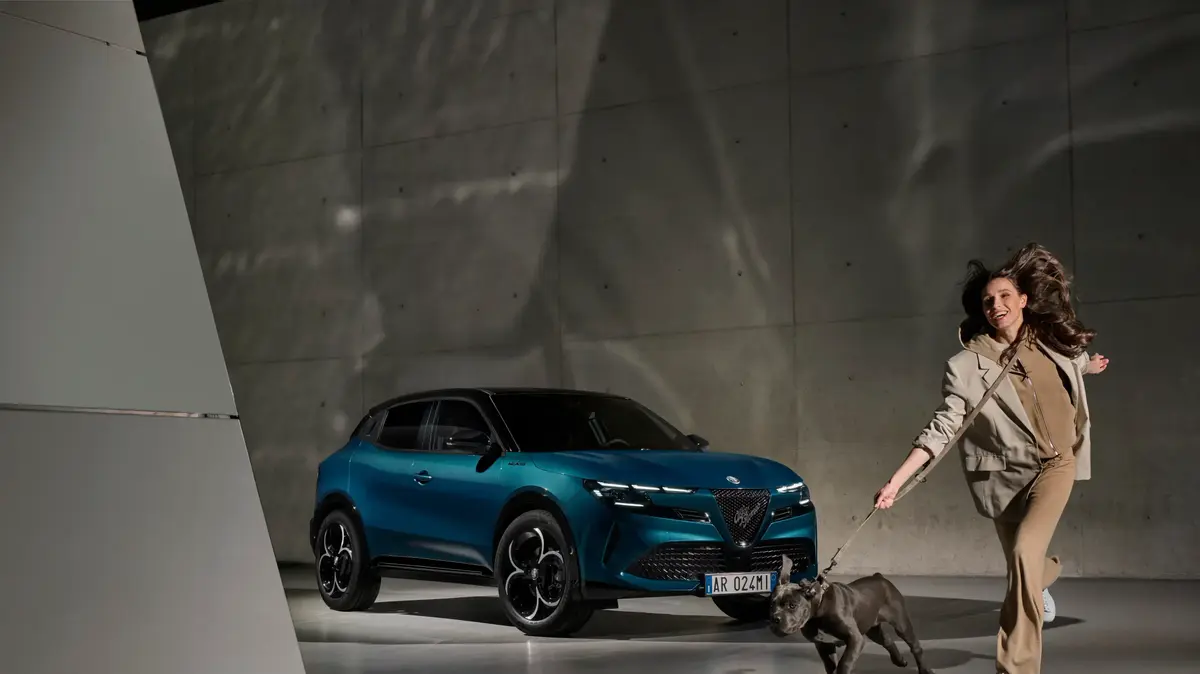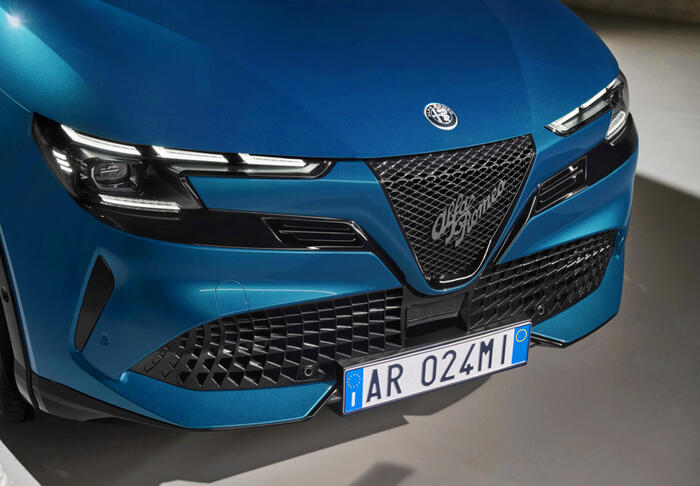Enlarge image
Photo: Alfa Romeo
General information about the model:
In 1972 Alfa Romeo presented the new Alfetta, in German "little Alfa".
The name of the upper middle class sedan was reminiscent of the racing car legend Tipo 158/159 »Alfetta«.
Alfa Romeo won the first two Formula 1 world championships with this car in 1950 and 1951.
With the Alfetta for the road, Alfa Romeo brought racing technology into large-scale production. As with the F1-Tipo, the designers used transaxle technology. The engine is at the front. The transmission, clutch and differential, on the other hand, are installed on the rear axle. "The result was an optimal weight distribution of around 50:50 and excellent road holding," explains Alfred Andreoli from the Alfaclub club.
The engines of the Alfetta Berlina, as the four-door sedan was called, also had racing genes in them.
The high-revving DOHC four-cylinder was a block made of aluminum with two overhead camshafts.
The 1750 machine developed a hefty 122 hp and accelerated the Alfetta Berlina to 180 km / h, which was rapid for the conditions at the time.
The price was around 14,000 marks, and you not only got a very fast car, but also a well-equipped car.
While most of the competitors were still using drum brakes, Alfa Romeo fitted the Alfetta with disc brakes as standard, including on the rear axle.
The comfort features were also generous and in later models ranged from electric window regulators and seats to an on-board computer to a sunroof and air conditioning (for a surcharge).
In 1974, Alfa Romeo added a coupé to the sedan, as was common at the time. Designer Giorgio Giugiaro drew the wedge-shaped two-door model with a shortened wheelbase. The four-seater coupé was noticeably designed for sportiness, also in the interior. As with a sports car, the tachometer was placed directly in the driver's field of vision, the only instrument behind the steering wheel. All other displays such as the speedometer, temperature gauge or fuel level moved to the center of the dashboard.
Under the hood of the Alfetta GT sat the 1.8 liter double ocher from the Berlina.
In the following years the carburetor settings and engines changed.
The 1.8 initially made 118 hp.
In 1976 a 1.6 engine with 108 hp followed and finally a two-liter unit with 122 hp, which delivered 130 hp in the final stage.
"That meant you were at the forefront back then," says Alfred Andreoli from Alfaclub e.
V.
With the facelift in 1978 - it contained less chrome trim, more plastic and a redesigned cockpit - a six-cylinder followed as the top-of-the-range engine, which was reserved for the coupé.
The 158 hp V6 in the new Alfetta GTV6 2.5 came from the state limousine Alfa Sei, but was modified and equipped with electronic fuel injection (L-Jetronic from Bosch), while six individual downdraft carburettors were still working in the Sei.
Production for the Alfetta did not end until 1986, after around 500,000 copies had been sold.
Alfa Romeo did not have a GTV for a long time after that, it was not until 1995 that a successor appeared with the new GTV and the almost identical Spider.
Why that of all people?
When Alfa Romeo presented the Alfetta in 1972, the VW Beetle with an antiquated pendulum axle and 50 hp engine was still being sold in Germany. In contrast, the Italo limousine looked like it was from another planet. The chassis and driving behavior were impressive, in a comparison test by the magazine "auto, motor und sport", the Alfetta Berlina won against the new BMW 5 Series (E12). Incidentally, the transaxle principle was to be adopted by Porsche a few years later, first in the 924, then also in the 928, 944 and 968. "A revolution back then," Porsche boasts today. But Alfa Romeo and even more Lancia brought the transaxle technology into series production much earlier.
The qualities of the Alfetta Berlina in particular were misunderstood for a long time; it is still an insider tip for lovers of Italian classics who want something different from the Alfa Romeo Spider, Giulia or Bertone GT. "The Alfetta is incredibly sporty for a family limousine," enthuses Alfred Andreoli, who has owned a wine-red Berlina from the first series for over 25 years. In addition, there is a grandiose look, especially with the coupé. “For me, an Alfetta GT or GTV is one of the most beautiful classic coupés there is,” says Andreoli.
The power of the high-revving four-cylinder is completely sufficient, especially since they sound wonderful with their smoky sound.
The fiery sound of the Arese V6 in the GTV6, another engine legend from Alfa Romeo, long before the takeover by the Fiat Group, can be addicting.
There is no need for a flap exhaust as you often hear it in modern sports cars, an Alfetta does not need such gimmicks.
The Alfaclub has put together audio samples and driving impressions with an 86 GTV6 here.
Availability:
The range is not bad for a classic from the 70s and early 80s; all sorts of examples can be found in the used car markets.
It is more difficult to find a car that is in its original rust-proof condition.
The Berlina were mostly worn out as everyday cars and had the cult factor in Italy like an ordinary VW Golf or Passat in this country.
In return, they are still relatively cheap to buy in Italy or Spain today.
The coupés had a higher priority right from the start, especially the sporty GT and GTV versions are now sought after and are expensive.
Spare parts supply:
Technical parts are relatively easy to get because the DOHC four-cylinder and also the V6 were built over decades.
It becomes much more difficult with sheet metal parts, and trim and interior components are also in short supply.
Networking in fan clubs, where people help each other with parts and repair tips, is worth gold.
Many German Alfisti also drive to parts markets in Italy.
Doors or fenders in a certain color or used seats and fittings can be found there.
Spare part prices (exemplary):
Coupling set: approx. 200 euros
Set of rear brake discs: approx. 60 euros
Door (used): approx. 100 euros
GTV rear light: used approx. 80 euros
Weak points:
Corrosion is typical of a car from the seventies and is the main problem. In the case of the first Alfetta series, the problem was that the fenders and other sheet metal parts were not screwed on, but welded. That makes body repairs difficult and expensive. It was not until the second series that the fenders were screwed on.
The area around the windshield and rear window, the cover plate below the front bumper and the front wheel arches are generally very susceptible to rust. The metal tank and the trunk floor to the right of the tank also rot on many vehicles. The engines are speed-stable and robust, provided they are gently warmed up. This takes time because the oil content is up to 6.5 liters. In the carburettor models, the rubber flanges to the engine block must not be porous, otherwise the engine will pull in air, which can lead to piston seizure.
The Achilles heel of the V6 is the valve control, which, unlike the four-cylinder engines, takes place via a toothed belt.
It should be changed after four years or 60,000 kilometers.
For the tensioning pulley, Alfisti like to use the one from the later V6 in the Alfa 164 Super, which is supposed to be more durable.
In cars of the second and third Alfetta series, the on-board computers fail more often.
In cars that have been in the sun a lot, the plastics in the dashboard often tear.
If the (roof) sky falls on your head, the glue has loosened.
Price:
In Italy you can still find restoration objects for 1000 euros.
In Germany there are construction sites from around 4,000 euros.
Halfway decent Alfetta Berlina cost 7500 euros and up.
Coupés are more expensive, good copies are in the five-digit range, GTV 6 are traded well over 20,000 euros.
Contact points on the Internet:
www.alfaclub.de
www.alfetta-gt.de


